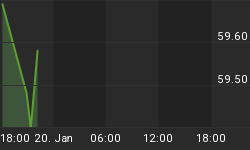With air travel down 60% last year, and airline industry losses topping $370 billion, this is the hardest hit sector from the pandemic. And the suffering isn’t over, yet.
The best-case-scenario estimates are that the airline industry will continue to suffer well into 2023 because of the pandemic. The worst-case scenario is that it won’t rebound to 2019 levels for three or four years.
But all this down time has revived the idea of the supersonic jet, and ripe for drastic change, the airline industry might just see disruption beyond COVID-19.
New types of commercial planes are about to come out that aim to eventually take passengers “anywhere in the world in four hours for $100”.
Last year, Boom Supersonic, an aviation startup, revealed their Overture supersonic passenger jet that is hoping to become the next-generation Concorde--fixing the problems of the failed British-French airliner that was ridiculously expensive and environmentally disastrous. Now-defunct, Concorde was charging $12,000 for a round-trip flight by the 1990s.
It was a great idea with absurdly poor execution.
The next-gen versions think they’ll get it right.
The most visible start-ups working on supersonic and hypersonic projects include Boom Supersonic and Florida-based Aerion.
Boom Supersonic’s CEO Blake Scholl told CNN Travel that the company’s long-term plan is to fly passengers anywhere in the world for just $100. We wouldn’t count on that price tag any time soon, but it sounds great in a headline. For now, Boom is targeting $5,000 fares for a New York to London round-trip. That is five times more than current fares but still cheaper than Concorde.
It’s not exactly going to disrupt travel. Yet. But eventually, it just might.
Overture, the Mach 2.2 commercial airliner expected to get in the air by 2026 will be 199 feet long, carry between 65 and 88 passengers, and fly twice the speed of the average commercial jetliner.
It would eventually be able to travel from New York to London, currently a 7-hour flight, in just 3.5 hours. Boom says the company currently has $6 billion in pre-orders of Overture aircraft.
Supersonic passenger jets will also tackle another issue where Concord failed, pollution.
The global aviation industry produces around 2% of all human-induced CO2 emissions, and, of course, the faster you go, the more fuel you burn.
Here, again, the promises are far down the road.
Next-gen supersonic jets will indeed create more pollution than our existing commercial jets. Some studies estimate that the new supersonic jets will consume as much as five to seven times as much fuel per passenger as current airplanes.
But the longer-term goal is to render them carbon neutral, even if the starting point is rather too “Concordian”.
According to CNN Travel’s interview with Scholl, Boom Supersonic aims to eventually build a “carbon-neutral” plane from the ground up, which would use alternative fuels that will utilize the same amount of carbon that’s being emitted during the flight
In other words, the plan is to suck carbon from the atmosphere, liquefy it into jet fuel and run the plane on that.
Florida-based Aerion has also unveiled its plans in March for a Mach 4+ commercial airliner called Aerion AS3, which would be capable of carrying 50 passengers. Production is slated to start in 2023.
Furthermore, NASA itself is planning to test an X-59 QueSST prototype over major U.S. cities in 2023, and Spike Aerospace will begin trials next year, eyeing commercial flights by 2028.

















